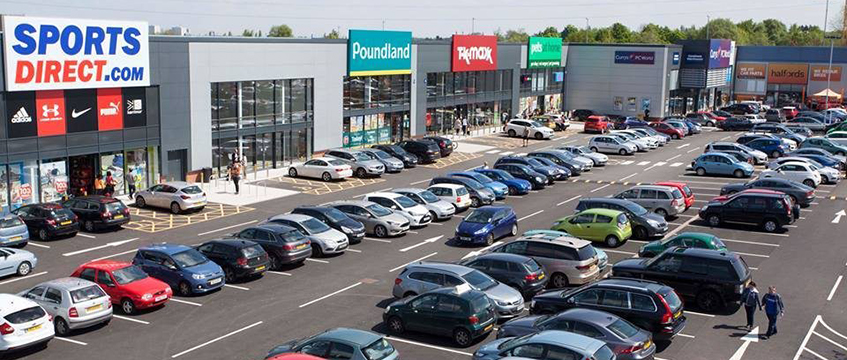Over-rented and over-stocked? Out-of-town retail to struggle
Out-of-town retail has consistently outperformed its high-street counterpart in recent years, with both opportunistic retailers and customers trading town centres for retail park shopping. Cheaper rents, more space and free parking have offered welcome relief against a turbulent period on the UK’s high streets.
However, with valuations heading south and new space still being built out, despite the relentless increase of online spend and occupier consolidation, is the sector in danger of becoming over-rented?
Rental analysis of the retail park sector shows that the next five years could be testing for landlords as vacancy and lease terms work to suppress asset values.
Out-of-town retail has consistently outperformed its high-street counterpart in recent years, with both opportunistic retailers and customers trading town centres for retail park shopping. Cheaper rents, more space and free parking have offered welcome relief against a turbulent period on the UK’s high streets.
However, with valuations heading south and new space still being built out, despite the relentless increase of online spend and occupier consolidation, is the sector in danger of becoming over-rented?
Rental analysis of the retail park sector shows that the next five years could be testing for landlords as vacancy and lease terms work to suppress asset values.
According to Radius Data Exchange, more than 50% of retail park leases signed since 1990 expire or experience lease break between now and 2025.
The outcome of this is that large swathes of out-of-town stock will be vacated or revalued. While it is unlikely that more occupiers will seek to evict themselves than remain, what we should instead expect is the sector to begin to revalue itself at the will of tenants. We know this from additional analysis into the current costs of renting, which show that many occupiers are paying over the market rent.
Radius Data Exchange also shows that 30% of stock that is coming up for expiry is currently over-rented, when measured against the average rental tone for retail park leases.
By studying the brief history of the evolution of out-of-town shopping, we can see that the period 2005-2015 is where the market began to saturate. Those peak rents that were agreed then are now coming to expiry and account for more than 50% of the current market.
This is also coming at a time when the amount of empty out-of-town space is on the increase. Data from Local Data Company shows that vacancy rates in retail parks have jumped since 2017, after almost five years of downward movement, with a steeper upward turn than that of even the high street. The closure of Toys R Us, Maplin and Poundworld has all had a bearing on this, and could lead to a temporary distortion in vacancy percentages.
It remains to be seen if those big box units will be filled quickly, given that in terms of further lease expiries, the homeware sector accommodates the highest proportion of units with lease expiry over the next five years. Fashion occupiers, on average, occupy a further 25% of these units and we would expect to see many vacate, given the move to online in the fashion sector.
With bricks-and-mortar occupiers under such pressure against online retail spend (peaking at 21.5% of all retail sales in November 2018), long-term commitments are becoming more scarce, with average lease lengths decreasing over the past 30 years, from 26 years in 1990 to 11 years in 2018.
Investment into the sector has dropped considerably, with H1 spend down by 80% year-on-year and on track to be the most subdued since 2012. Many landlords are now looking to offload schemes instead of acquire them.
And we have seen some of the UK’s largest REITs, such as Hammerson and intu, propose scaling back on secondary schemes, instead investing in their prime central shopping centre destinations.
The raft of CVAs and administrations that have hit retail could continue to hammer vacancy rates. The value and homeware sectors had previously propped up empty space in out-of-town destinations, but with a slowdown in their growth, new incoming tenants may well be of different origin.
Looking at units that have become vacant since the start of last year, one in five is in out-of-town schemes, across some 4.6m sq ft of retail. The vast amount of stock coming up for expiry or review means that the power lies with the occupiers.
Owing to the laws of supply and demand, rents will probably begin to fall in the short term. Despite this, it has not stopped hungry developers lodging plans for new out-of-town developments. Our data shows applications for new retail parks have doubled over the past five years.
With an already bloated retail footprint against the backdrop of increasing vacancy and a changing shopping landscape, out-of-town landlords may well face a backlash from occupiers maximising their value in tricky trading conditions.
To send feedback, e-mail james.child@egi.co.uk or tweet @JamesChildEG or @estatesgazette











